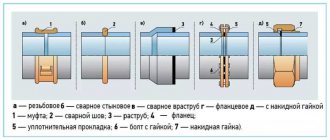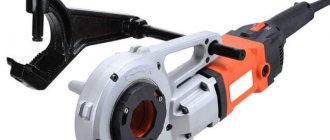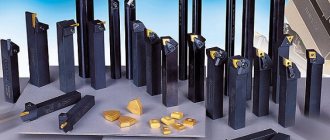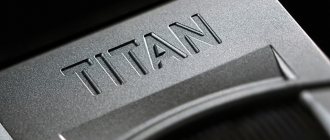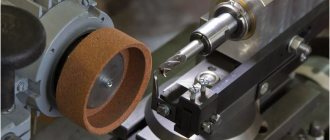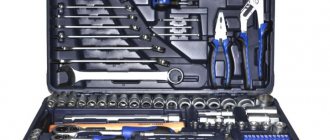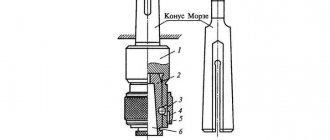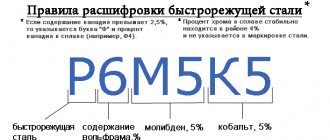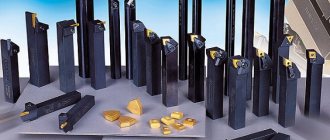| Metric machine taps with colored stripes - Medium HSSE taps M3-M24 for through holes (green ring) Bohrcraft - Spiral HSSE taps M3-M24 for blind holes (green ring) Bohrcraft - Medium HSSE taps M3-M24 for through holes ( blue ring) Bohrcraft - M3-M24 spiral taps from HSSE for blind holes (blue ring) Bohrcraft - Medium MF6-MF20 taps for small threads from HSSE for through holes (blue ring) Bohrcraft - MF6-MF20 spiral taps for small threads from HSSE for blind holes (blue ring) Bohrcraft - M3-M24 medium taps from HSSE for through holes (red ring) Bohrcraft - M3-M24 spiral taps from HSSE for blind holes (red ring) Bohrcraft - M3-M24 taps from HSSE PM for through holes holes (black ring) Bohrcraft - M3-M24 spiral taps from HSSE PM for blind holes (black ring) Bohrcraft - M3-M24 taps from HSSE TiCN for through and blind holes in gray cast iron (white ring) Bohrcraft - M3-M20 spiral taps HSSE aluminum for through and blind holes (yellow ring) Bohrcraft | Taps for G (BSP), Ww (BSW), UNC, UNF, UNEF, PG, Rc and K (NPT) threads - G 1/8 - G 2 HSS taps for through and blind holes Bohrcraft - G 1/8 taps - G 1 from HSSE Bohrcraft - Taps G 1/8 - G 1 spiral from HSSE Bohrcraft - Taps Ww 1/8 - Ww 1 (BSW) from HSS Bohrcraft - Taps UNC 1/4′ - UNC 2′ from HSS for through and for blind holes Bohrcraft – UNC 1/4′ – UNC 1′ HSSE taps for through holes Bohrcraft – UNC 1/4′ – UNC 1′ HSSE spiral taps for blind holes Bohrcraft – UNF 1/4′ – UNF 1′ taps HSS for through and blind holes Bohrcraft – UNF 1/4′ – UNF 1′ HSSE taps for through holes Bohrcraft – UNF 1/4′ – UNF 1′ HSSE spiral taps for blind holes Bohrcraft – Rc and K (NPT) taps for tapered threads - NPT 1/16 NPT 2 taps from HSS Bohrcraft - Taps PG 7 - PG 48 from HSS for through and blind holes Bohrcraft |
| Dies (lerks) - Dies M2-M52 from 9ХС - Dies M1-M52 from HSS Bohrcraft - Dies M3-M12 size ∅25x9 mm from HSS Bohrcraft - Dies M3-M36 hexagonal from HSS Bohrcraft - Dies MF3-MF63 from HSS Bohrcraft - Dies M3-M20 from HSSE Bohrcraft - Left dies M3-M24 from HSS Bohrcraft - Left dies M4-M30 - G1/8-G2 dies from 9ХС or ХВСГ - G1/8-G1 dies from HSS Bohrcraft - G1/8-G1 hex dies from HSS Bohrcraft - Dies W 1/8-W 1 1/2 (BSW) - Dies W 1/8-W 1 (BSW) from HSS Bohrcraft - Dies Rc 1/8 - Rc 2 and K 1/8 - K 2 (for tapered threads) - UNC dies No. 2-UNC 2 from HSS Bohrcraft - UNF dies No. 2 - UNF 1 from HSS Bohrcraft | Twist drills with cylindrical shank - Drills ∅ 3.2-6.0 mm extra short Bohrcraft - Drills ∅ 2.0-13.0 mm short Bohrcraft - Drills ∅ 2.0-13.0 mm short from HSSE Bohrcraft - Drills ∅ 0.5-20.0 mm medium - Drills ∅ 0.3-20.0 mm medium rolled Bohrcraft - Drills ∅ 0.5-16.0 mm medium ground Bohrcraft - Drills ∅ 1.0-13.0 mm medium in individual packaging Bohrcraft - Drills ∅ 1.0-13.0 mm medium from P9 - Drills ∅ 0.5-20.0 mm medium from P6M5K5 (cobalt) - Drills ∅ 1.0-16.0 mm medium from HSSE Bohrcraft - Drills ∅ 1.0-13.0 mm medium ground from HSSE in individual packaging Bohrcraft - Drills ∅ 1.0-13.0 mm medium ground from HSS with TiN coating Bohrcraft - Drills ∅ 1.0-13.0 mm medium ground Turbocraft — Drills ∅ 1.0-13.0 mm, medium ground, individually packaged Bohrcraft — Drills ∅ 1.0–13.0 mm, medium, ground, TiN coated, individually packaged Bohrcraft — Drills ∅ 2.0–6.0 mm, double-sided for thin-walled materials Bohrcraft - Drills ∅ 2.0-8.0 mm double-sided for thin and hollow materials Bohrcraft - Drills ∅ 3.0-10.0 mm ground with a 6-sided shank Bohrcraft - Drills ∅ 10.5-20, 0 mm HSS ground with reduction hv. in ind. Bohrcraft packaging - Drills ∅ 13.5-25.0 mm from HSS ground with reduction. hv. in ind. packaging Bohrcraft - Drills ∅ 10.5-25.0 mm from HSS ground with a reduced shank Bohrcraft - Drills ∅ 10.5-20.0 mm from HSS ground with a reduced shank in individual packaging Bohrcraft - Drills ∅ 11.0-20, 0 mm HSSE ground with reduced shank Bohrcraft - Drills ∅ 10.5-20.0 mm blued from HSS with reduced shank Bohrcraft - Drills ∅ 10.5-20.0 mm blued HSS with reduced shank tails. in ind. Bohrcraft packaging – Drills for cutting off weld spots Bohrcraft |
| PROFI ground drills with cylindrical shank - Drills ∅ 2.0-13.0 mm short from HSS Bohrcraft - Drills ∅ 2.0-13.0 mm short from HSSE Bohrcraft - Drills ∅ 2.0-13.0 mm short from HSSE for difficult to machine steels Bohrcraft - Drills ∅ 2.0-13.0 mm short from HSSE with TiALN coating Bohrcraft - Drills ∅ 2.0-13.0 mm short from HSSE with TiN coating Bohrcraft - Drills ∅ 0.6-16, 0 mm from HSS PROFI Bohrcraft - Drills ∅ 0.6-16.0 mm from HSS with partial TiN coating Bohrcraft - Drills ∅ 1.0-13.0 mm from HSS PROFI reinforced Bohrcraft - Drills ∅ 1.0-13.0 mm from HSS PROFI reinforced with TiALN coating Bohrcraft - Drills ∅ 1.0-13.0 mm copper-plated from HSSE Pro for heat-resistant and acid-resistant steels Bohrcraft - Drills ∅ 1.0-13.0 mm from HSSE PROFI with TiALN coating for heat-resistant and acid-resistant steels - Drills ∅ 2.0-13.0 mm from HSSE PROFI with TiALN coating for dry drilling - Drills ∅ 1.0-13.0 mm from HSSE PROFI for materials with long and difficult-to-break chips - Drill 0.6 from HSSE PROFI for titanium and stainless steel - Drills ∅ 0.6-16.0 mm from HSSE PROFI for titanium and stainless steel - Drills ∅ 1.0-13.0 mm from HSSE PROFI with TiALN coating for dry drilling - Drills ∅ 2.0- 13.0 mm for aluminum - Drills ∅ 2.0-13.0 mm for brass | Taper Shank Drills - Ø 6.0-80.0mm Taper Shank Drills - Ø 10.0-60.0mm HSS Taper Shank Drills - Ø 5.75-79.0mm Taper Shank HSS Drills Fervi shank - Drills ∅ 10.0-75.0 mm PROFI from HSS with tapered shank Bohrcraft - Drills ∅ 10.0-50.0 mm from HSSE with tapered shank PROFI Bohrcraft |
| Long and long drills with conical and cylindrical shanks - Drills ∅ 2.0-13.0 mm long Bohrcraft - Drills ∅ 3.0-13.0 mm long series Lcut=150 mm Ltotal=300 mm - Long drills 1-16 ground from HSS Bohrcraft - Drills ∅ 2.5-6.0 mm for hollow profiles in the production of windows Bohrcraft - Drills ∅ 1.0-13.0 mm PROFI long for materials with long chips Bohrcraft - Drills ∅ 0.6-13.0 mm PROFI long from HSS Bohrcraft - Drills ∅ 2.0-13.0 mm PROFI long from HSSE Bohrcraft - Drills ∅ 2.0-13.0 mm PROFI long from HSSE with TiN coating Bohrcraft - Drills ∅ 2.0-13, 0 mm extra long ground Bohrcraft - Drills ∅ 2.0-13.0 mm extra long from HSS reinforced Bohrcraft - Drills ∅ 2.0-13.0 mm extra long from HSSE reinforced Bohrcraft - Drills ∅ 10.0-50.0 mm PROFI from HSS extended with Bohrcraft tapered shank | Core drills — Core drill 12.0 from HSS L dir=30 mm — Core drills ∅ 13.0-60.0 mm from HSS L dir=30 mm — Core drills ∅ 12.0-60.0 mm from HSSE L dir =30 mm - Core drills ∅ 14.0-60.0 mm carbide L dir = 35 mm - Core drills ∅ 12.0-60.0 mm from HSS L dir = 50 mm - Core drills ∅ 12.0-60, 0 mm from HSSE L dir=50 mm — Core drills ∅ 12.0-60.0 mm carbide L dir=50 mm — Core drills ∅ 20.0-32.0 mm from HSS L dir=110 mm — Core drills ∅ 20.0-32.0 mm carbide L dil=110 mm — Guide pin for core drills — MK/Weldon adapter — Adapters for Weldon connection 19 mm (3/4) Bohrcraft |
| Carbide drills, left-hand, conical, stepped, centering, tap drills - Drills ∅ 2.5-13.0 mm with carbide inserts - Drills ∅ 1.0-13.0 mm carbide short Bohrcraft - Drills ∅ 1.0-13 .0 mm carbide with TiALN coating short Bohrcraft - Drills ∅ 3.0-13.0 mm carbide medium Bohrcraft - Drills left ∅ 1.0-13.0 mm medium - Cone drills - Cone drills with stop - Step drills - Centering drills 1-6,3 combined - Centering drills 1-6,3 combined Bohrcraft - Tap drills M3-M10 with drill and hex shank - Tap drills M3-M12 from HSSE Bohrcraft | Countersinks and countersinks - Countersinks 16 three-pronged with a conical shank - Countersinks 20-30 three-pronged with a conical shank - Countersinks 6.3 carbide angle 90 g Bohrcraft - Countersinks 31 carbide angle 90 g Bohrcraft - Countersinks 8.3-25 carbide angle 90 g Bohrcraft - P6M5 Countersinks - HSS 90deg Countersinks Bohrcraft - 6.3-31.0 HSS 90deg Countersinks with AL-Cro Coating Bohrcraft - HSS 60deg Countersinks Bohrcraft - HSS 120deg Countersinks Bohrcraft - HSS 90 degree long countersinks Bohrcraft - HSSE (Co5) 90 degree countersinks Bohrcraft - HSS 90 degree countersinks with tapered shank Bohrcraft - HSS countersinks with 6-point 1/4′ shank Bohrcraft — Countersinks for deburring after drilling Bohrcraft |
| Reamers - Hand reamers - Machine reamers - Machine reamers 4.0 - 30.0 HSS - Machine reamers conical 4.0 - 20.0 HSS - Machine reamers 10.0 - 30.0 HSS with tapered shank - Machine reamers 3.0 — 20.0 HSSE — Machine reamers 3.0 — 20.0 HSSE spiral — Machine reamers 10.0 — 30.0 HSSE with tapered shank | Metal Drill Sets - Ground Drill Sets in Plastic Box Bohrcraft - Drill Sets Bohrcraft - Ground Drill Sets in Metal Box Bohrcraft - HSSE Ground Drill Sets Bohrcraft - TiN Coated Drill Sets Bohrcraft |
| Sets of taps, dies, drills - Set M3-M12 dies Bohrcraft - Sets M3 - M12 manual complete taps and drills Bohrcraft - Sets M3 - M12 machine taps and drills Bohrcraft - Sets M3 - M12 single-start taps and drills (with collar) Bohrcraft - Set M3-M12 hand taps and dies Bohrcraft - Set M3-M20 hand taps and dies Bohrcraft - Set M3-M12 hand taps and dies and drills Bohrcraft - Set M2-M18 hand taps and dies of 110 pcs Fervi - Set M6-M24 hand taps and dies of 45 pcs Fervi - Set of M, UNC, UNF, NPT hand taps and dies Fervi - Set of taps, dies and drills 44 pcs. HSSE Bohrcraft - Set of hand taps, dies and drivers 54 items HSSE Bohrcraft - Set of combination taps and drills Bohrcraft - Threading tool sets | Countersink, Cone, Step, Core Drill Sets - Bohrcraft Countersink Sets - Bohrcraft Cone Drill Sets - Bohrcraft Step Drill Sets - Bohrcraft Bi-Metal Compound Core Drill Sets - Bohrcraft Metal Core Drill Sets |
| Threading dies - Threading dies for metric threads with a pitch of 1 mm - Threading dies for metric threads with a pitch of 1.25 to 5.5 mm - Threading dies for straight pipe threads 11 threads / inch - Threading dies for straight pipe threads 14 threads / inch inch | Drivers – Driver for taps – Drivers for Bohrcraft taps – Imported collet drives for taps with ratchet – Driver for round dies – Drivers for imported round dies |
| Thread repair - Countersinks for thread repair - Set for repairing spark plug threads in engines - Sets of tools and inserts for repairing metric threads - Sets of tools and inserts for repairing several metric threads - Extractors for broken studs, bolts - Extractor sets for studs and bolts |
We offer a large range of metal-cutting, thread-cutting, gear-cutting tools, milling tools, metalworking and turning tools. Metal tool. Metal turning tool. Metal cutting tool.
Classification of cutting tools
Metal-cutting equipment, which today is used in a variety of industries, as well as in everyday life, allows the use of various types of cutting tools.
The list of these types is very extensive, thanks to which it is possible to select a metal-cutting tool that best suits the characteristics of the operations being performed. The classification criteria for the described instrument are very numerous; this article is devoted to their consideration. One of the main classification criteria is the design feature of the cutting tool . It distinguishes the following types:
- Cutters: a single-edge type tool that allows metalworking with the possibility of multidirectional feed movement;
- Milling cutters: a tool in which processing is performed with a rotational movement with a trajectory having a constant radius and a feed movement that does not coincide in direction with the axis of rotation;
- Drills: Axial-type cutting tools that are used to create holes in a material or increase the diameter of existing holes. Machining with drills is carried out by a rotational movement, supplemented by a feed movement, the direction of which coincides with the axis of rotation;
- Countersinks: an axial type tool, with the help of which the size and shape of existing holes are adjusted, and their diameter is also increased;
- Reamers: an axial tool that is used for finishing the walls of holes (reducing their roughness);
- Counterbodies: metal-cutting tools, also classified as axial and used for processing the end or cylindrical sections of holes;
- Dies: used for cutting external threads on workpieces;
- Taps: also used for cutting threads - but, unlike dies, not on cylindrical workpieces, but inside holes;
- Hacksaw blades: a multi-blade type tool in the shape of a metal strip with many teeth, the height of which is the same. Hacksaw blades are used to cut off part of a workpiece or create grooves in it, while the main cutting movement is translational;
- Shapers: used for gear turning or gear shaping of shaft splines, gears, and other parts;
- Shavers: an instrument whose name comes from the English word “shaver” (translated as “razor”). It is intended for finishing of gears, which is performed using the “scraping” method;
- Abrasive tool: bars, circles, crystals, large grains or powder of abrasive material. The tools included in this group are used for finishing of various parts.
The next classification criterion is the type of surface , the processing of which is carried out using a metal-cutting tool. The following tools are distinguished:
- Used for processing bodies of rotation, external shaped, as well as flat surfaces: this group includes the cutters and cutters described above, abrasive wheels and some other products;
- Used for processing holes: we are talking about countersinks and drills, boring cutters and broaches;
- Tools used to cut threads: this group includes dies, taps, knurling rollers, and a number of other products;
- Used for processing the surfaces of sprockets, splined shafts, wheel teeth: these operations are performed using finger and disk cutters, rolling cutters and cutters, grinding wheels and shaver. It is impossible not to mention broaches, double cutter heads and gear-planing cutters (they are designed for cutting bevel-type spur wheels), as well as worm-type conical cutters and gear-planing heads (with the help of these tools, conical-type wheels with spiral teeth are cut).
Another criterion for classifying a metal-cutting tool is the principle of its interaction with the material . It identifies tools such as:
- Regular;
- Rotary, the circular blade of which is continuously renewed.
In addition, experts point to such a classification criterion as type of manufacture , highlighting:
- Solid cutting tool;
- A composite tool, the design of which is an integral connection of several elements;
- A prefabricated tool characterized by the detachable nature of the connection of the elements that form it.
According to the method of connection to the machine, attachment, tail and prismatic tools are distinguished.
Finally, according to such a criterion as the method of application manual, machine, and machine-hand metal-cutting tools are distinguished.
What is the purpose of a metalworking tool?
Grinding tools for metalworking are abrasive grains bound with special binding materials. The shape of the grains is distinguished by the presence of sharp edges of different sizes, which, when touching the metal, are capable of removing layers of a certain thickness from it.
Grinding tools include: bars, sandpaper, fabrics with special coatings, wheels.
Cutters, cutters, drills, taps, and broaches can be used for cutting. They are selected in such a way that their hardness is higher than that of the materials being processed.
Cutting metal 4–7 mm thick is performed with metal scissors or a jigsaw, or a hacksaw. It is convenient to cut a layer from 5 mm with a grinder.
Handles, hammers, sledgehammers, and shaped hammers can be used in metalworking or blacksmithing work. Handbrake handles are used to determine the force of impact and indicate the exact location for processing. Sledgehammers are used for cold deformation of workpieces.
Artistic processing of metals can be done with a shaped hammer. It allows you to knock out relief surfaces due to the presence of a curved or wide flat and rounded striker.
The following equipment is used for minting:
- ratchets, hooks for basting relief blanks;
- boboshniks, kanfarniks, loschatniks to create the necessary relief;
- cuts for chasing lines, semicircular or curved lines;
- figured coins (tube, boot, iron, kanfarnik, purushnik, loshchatnik), used to create a series of identical small detailed patterns.
Classification of cutting tools
There are quite a large number of different classification features for cutting tools; the main ones can be called design features. Depending on the geometric shape and basic parameters, the following options are distinguished:
- cutters;
- incisors;
- countersinks;
- drill;
- sweeps;
- countersinks;
- taps;
- dies;
- shaver;
- hacksaw blade;
- abrasive type tool.
All of the above types of cutting tools are characterized by their own specific features. An example is a hand-held cutting tool called a die. By using a special fastening it is possible to obtain a threaded surface on a cylindrical surface.
Incisors have become quite widespread. They are classified as cutting tools that are designed to process exclusively rotating bodies.
Among the features of this version, we note the following:
- There is a working part and a holder.
- The sharpening angle may vary significantly depending on the purpose of the product.
- A variety of alloys are used in manufacturing, which determine the scope of application of the product.
Milling cutters have been seen quite often lately. This is due to the fact that such a cutting tool can be used to produce cabinet products. A special feature is that the main rotation is transmitted to the cutter, while the workpiece is stationary at this time. Structurally, cutters are much more complex than cutters, which determines their higher cost.
Areas of use
The scope of application of cutting tools is very extensive. Most of the products are found in mechanical engineering, since the workpieces are represented by various alloys. Considering the scope of application, we note the following points:
- Most products can cut metal only if a large force is transferred when the workpiece is rigidly secured. That is why they are manufactured in such a way that they can be installed in machines and other similar equipment. Scope of application: industry with varying levels of labor productivity. A distinctive feature of this group is its long service life and wear resistance.
- Processing of workpieces can also be carried out in a home workshop. For such a case, design options that are used for manual processing or the use of desktop equipment are suitable. Experts recommend choosing low-price options for your home workshop. This is due to the fact that they are excellent for machining at low feed rates and cutting speeds. Cutting tools for industrial machines are much more expensive and require professional periodic sharpening.
In general, we can say that the scope of application of cutting tools is very extensive. Mechanical cutting can only be carried out if there is a cutting edge.
Selecting a cutting tool
Only a properly selected tool can be used to obtain a quality product. With such a large selection to choose from, it is difficult to choose the most suitable product design. Metal cutting tools are selected taking into account the following recommendations:
- To begin with, the task at hand is determined. As a rule, the production technology is drawn up by the technologist, who also indicates the most suitable cutting tool. For example, you can obtain a body of revolution with the required diameter by using a cutter or drill hole. In this case, one part can be manufactured using one type of product with different parameters.
- The next step is to determine what kind of equipment will be used to transmit rotation. Examples include industrial machines or manual structures. From this point depends which holder is suitable.
- At the time of drawing up the technological map, the main cutting parameters are indicated. Taking into account this indicator, a cutting tool is selected according to the type of material used in the manufacture of the main or working part.
- The performance of the equipment used is also taken into account. To produce a large number of products, you need to choose a version with increased wear resistance.
Types of metal processing
The following types of metal processing are available:
- Turning of surface layers of material on lathes. The rotating workpiece is affected by a cutter that can move along the entire length of the workpiece.
- Planing on transverse or longitudinal type machines. When the part moves back and forth relative to the cutter or vice versa, layers of metal are removed in a given plane. The movement of the cutter along the surface is intermittent.
- Chiseling of workpieces on slotting machines or manually. The equipment moves relative to the part along a reciprocating path along the selected axis. Allows you to simultaneously remove large pieces of material from the end part.
- Drilling on machines or manually. When the drill rotates around its axis, metal layers are removed and a cylindrical hole is formed. The translational movement of the drill is performed along the selected centerline.
- Milling on machines. A reciprocating movement of the cutter is carried out, rotating around an axis parallel to the surface of the workpiece and a layer of metal of a certain thickness is removed. Some machines implement movement of the workpiece relative to a rotating cutter.
- Grinding on machines. It is performed by direct contact of a rotating grinding wheel or sanding belt with the workpiece. It is permissible for the workpiece to move relative to the abrasive part of the equipment, or vice versa.
